Total eclipse: For New Yorkers, the out-of-this-world experience is just a drive away
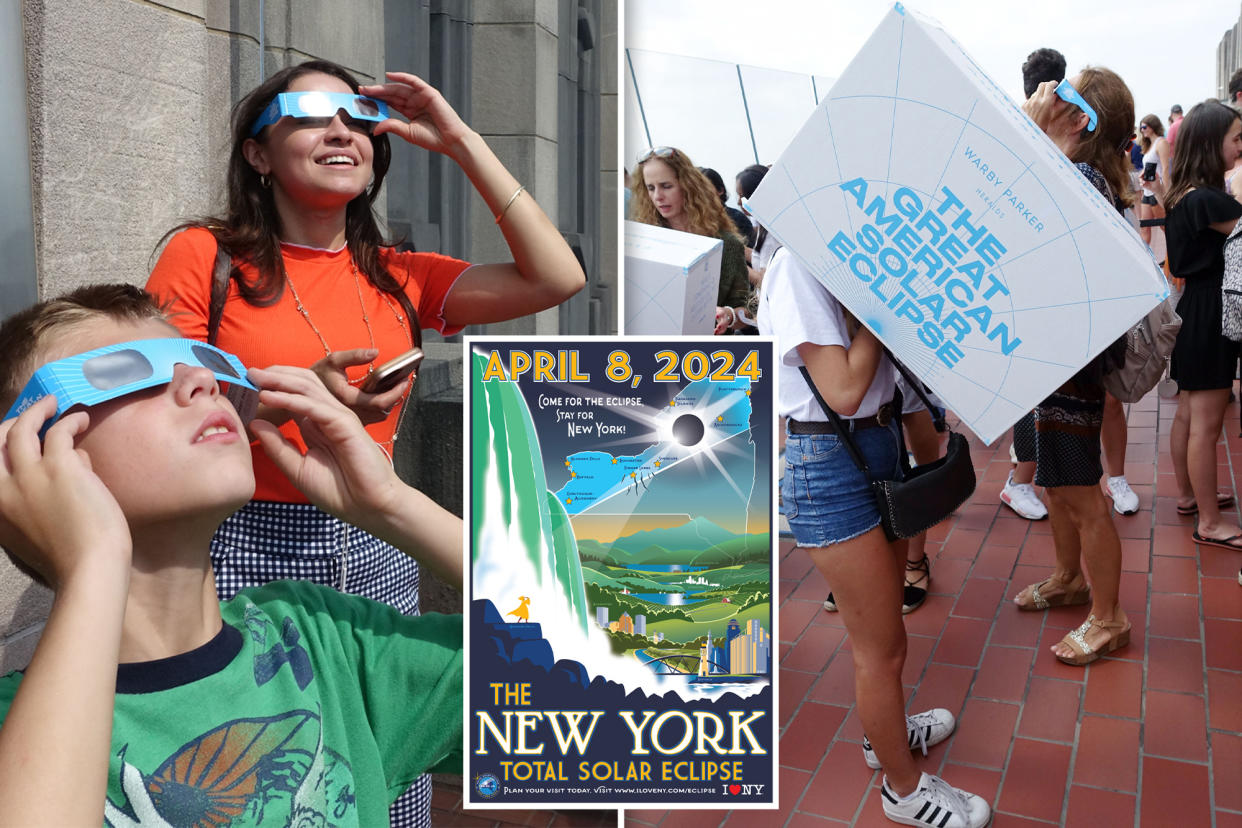
New Yorkers have a month to prepare for a once-in-a-lifetime opportunity to see something that is literally out of this world.
A total solar eclipse will be seen across North America on April 8, and the zone of totality — where the moon completely blocks out the light of the sun — can be observed in huge swaths of Upstate New York, from Buffalo to the Finger Lakes to the Adirondack Mountains.
Nearly 4 million New Yorkers live within the 100-mile wide path of totality, and hundreds of thousands more are expected to travel within the state to see the amazing spectacle, according to models by the website Great American Eclipse.
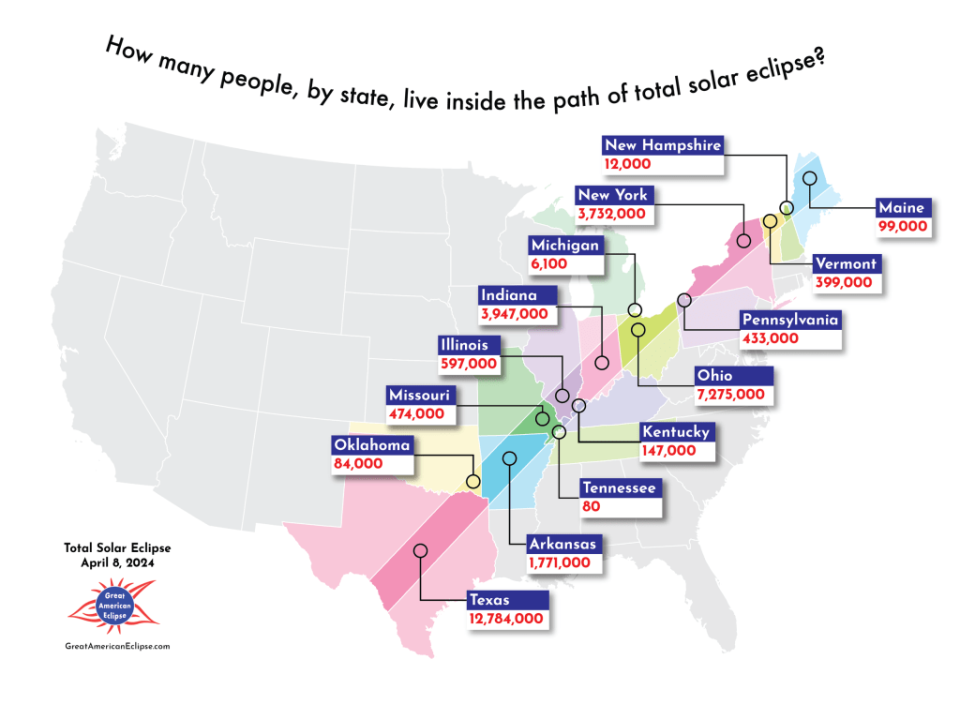
Solar eclipses are only visible about every 18 months worldwide and about once every 400 years from any given location, so now is the time to order solar safety glasses and start making a plan.
The eclipse will be viewable in major cities like Austin, Dallas, Indianapolis and Cleveland before first contact — when the moon starts to take its first nibble out of the sun — becomes visible at 2:04 p.m. in Buffalo.
By 3:20, Western New York will be in total darkness, for up to 3 minutes and 46 seconds depending on where you are in the path of totality, and by 4:32 the sun will be fully visible, according to NASA, which has produced an interactive map of the eclipse’s path.
The same sequence of events will play out in Plattsburgh, 300 miles to the northeast, starting nine minutes later.
In between, the eclipse can be viewed in the Adirondacks High Peaks region, where ski resorts like Whiteface Mountain will close at 2 p.m. and usher non-skiers up the mountain in a gondola for a viewing party that costs $50.
The Olympic Center, in nearby Lake Placid will host an “Eclipse the House” viewing party under a wide open sky at the speed skating oval, with food, music and glasses provided.
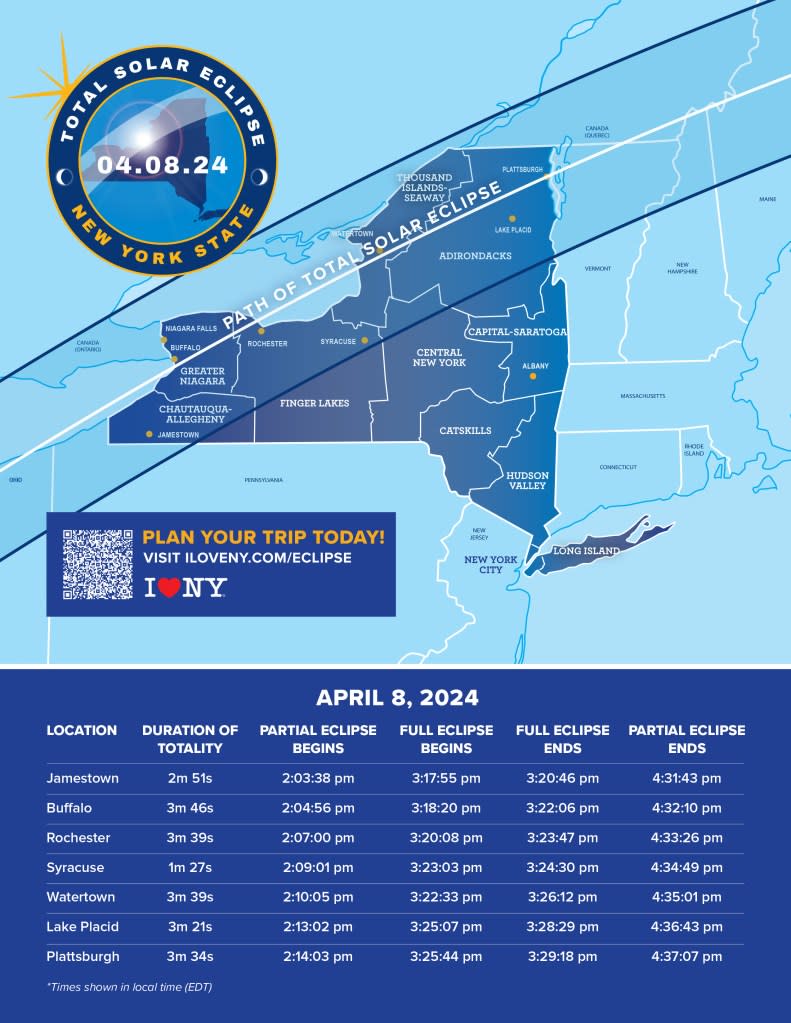
The events had already attracted lots of interest, officials said, and no Lake Placid hotels were available on Priceline for that two-day span, but 28 hotels could be booked the following weekend using the site.
“The whole area is pretty much sold out, like many places that are in the path of totality, and here in Lake Placid we’ll have multiple viewing locations, but also après-eclipse activities that will be going on, so it’s going to be a good place to be,” Darcy Rowe Norfolk, the communications directors for the Olympic Regional Development Authority told The Post.
The area, known for its 46 mountains over 4,000 feet tall, has infinite viewing opportunities for intrepid types. But scenic summit views are not without their pitfalls either in the early spring, hikers warn.
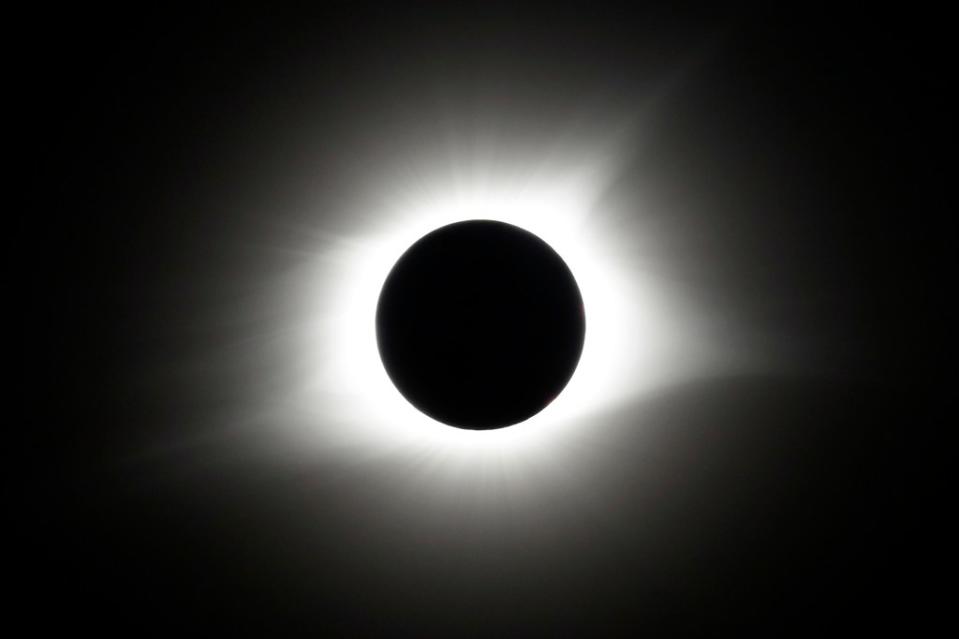
“First off, you really want to have a map and know where your trailhead parking is. And, the trailhead parking may not be available, it may be full. So … think about an alternative,” said Laurie Rankin, the 64-year-old president of the Adirondack 46ers club.
“Secondly, when it comes to being on the High Peaks in April, it may be very spring-like down low, and it will still be full-on winter up high.
“Particularly if you are looking at being on a peak that is above tree line, that is yet another whole set of things to think about. These trails may require you to have specialized gear such as microspikes, full crampons, snowshoes [and] numerous layers.”
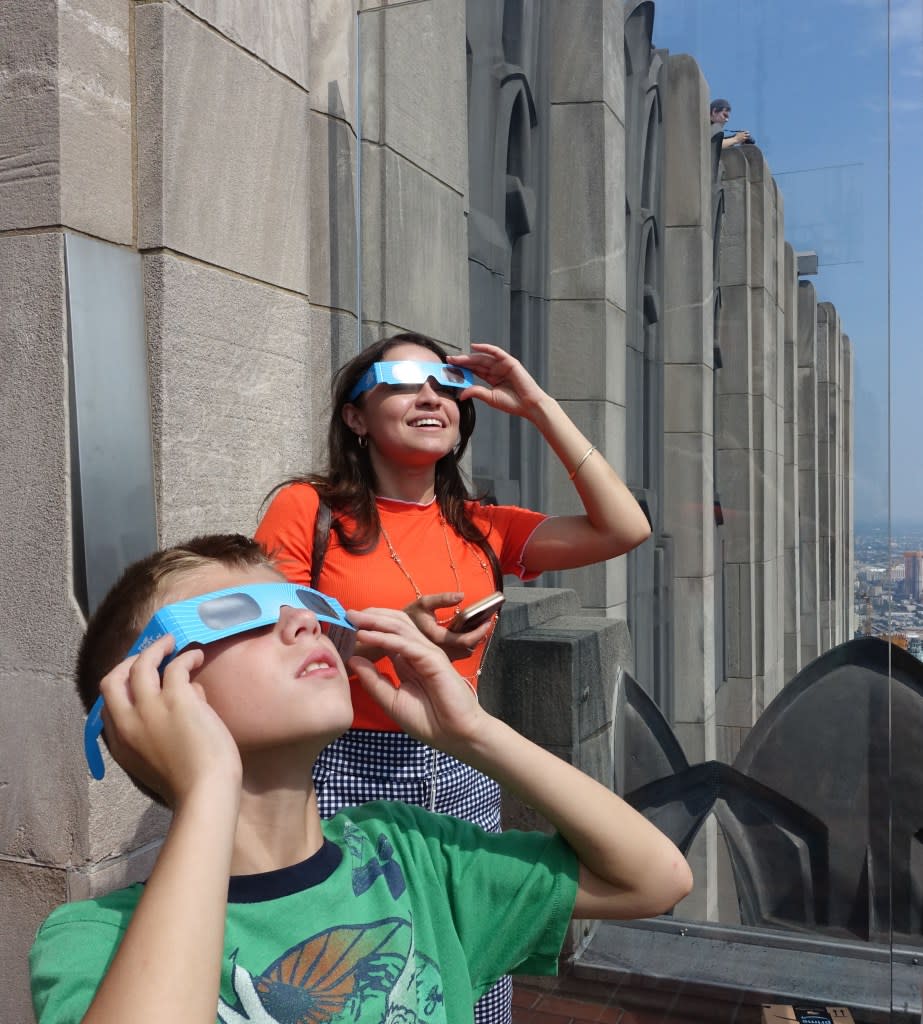
Buffalo and Rochester are also squarely in the heart of the totality zone, and the population of New York’s second and third largest cities was also expected to swell for the show in the sky.
Morgan Barry, 42, the director of Green Visions, a workforce development program for at-risk youth in Rochester providing job skills in landscaping, horticulture and agriculture, noted that excitement is already building for the big day.
“I’ll be giving my team a break to be able to witness something like that, absolutely. I’ll definitely be giving my kids the afternoon of to take part in the festivities,” Barry said, adding that Rochester will host an array of festivities.
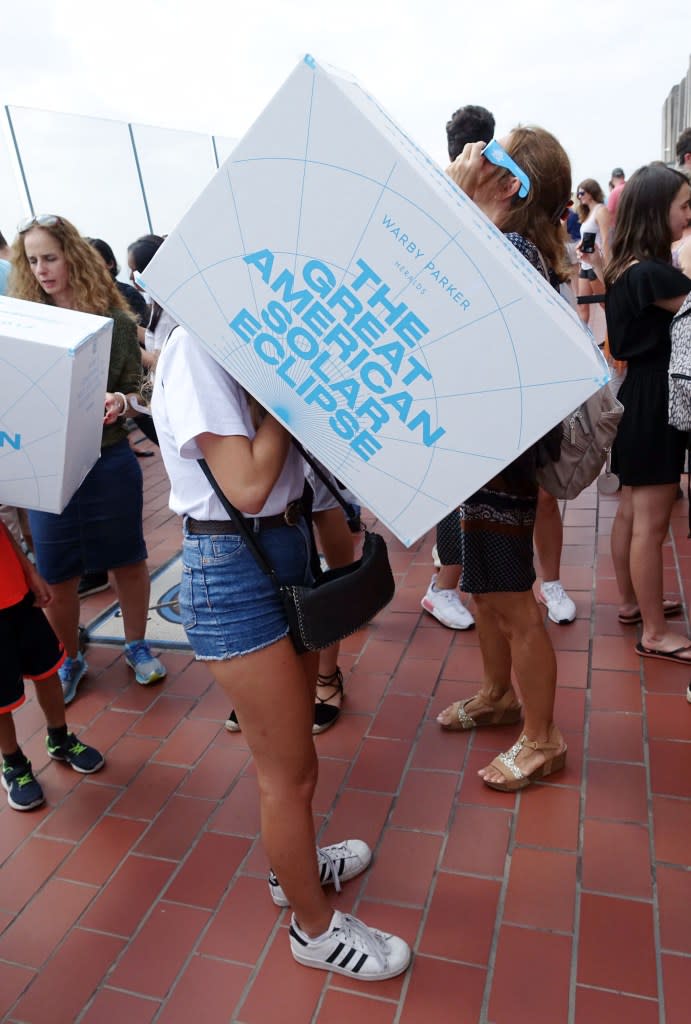
“The baseball stadium [Innovative Field] here… they’re selling seats, there’s going to be a whole day around it. There’s going to be merch, there’s going to be music, there’s going to be beer,” Barry said of his own plans with his wife and mother.
“I wouldn’t be surprised if the majority of people took a half day just for that, just because it is such a rarity.”
New York officials last week announced a “range of events and activities to celebrate” the historic event at state parks throughout the totality zone, all of them free of charge.
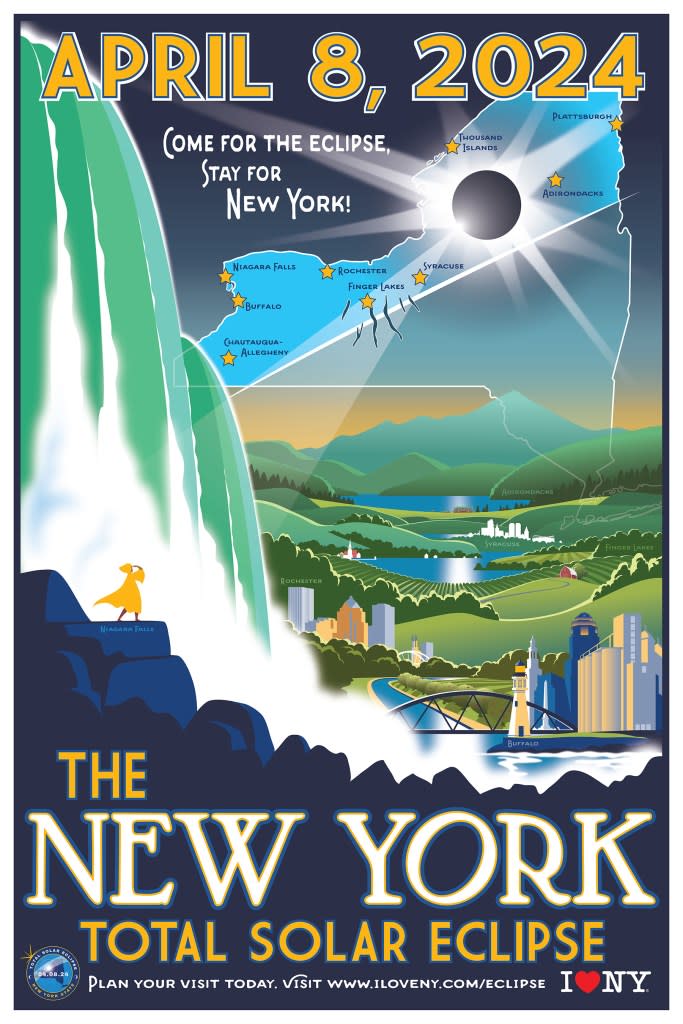
“Our top priority is ensuring that New Yorkers and visitors can safely witness this generational spectacle, and I encourage everyone to keep safety in mind so that all can savor this experience in our state,” Gov. Kathy Hochul said in a press release.
While there were activities aplenty, accommodations in most of the totality zone were already nearly as scarce as in Lake Placid, with prices trending toward the moon.
A tiny cabin in Keene NY that typically rented for $299 a night for a Sunday to Tuesday stay in April was $1,125 a night for April 7-9 on Airbnb, while a modest Burlington, Vermont apartment that typically rents for $198 on a Sunday and Monday night was asking $998 a night surrounding the eclipse.
Hotel listings in Montreal, which is right on the northern edge of the totality zone and would see the total eclipse for less than 90 seconds, appeared to be priced more normally.
A room in a bed and breakfast just north of the Quebec border was listed for only $63 a night last week.
Of course, no amount of planning and money will overcome the biggest obstacle to witnessing the event: the weather.
Sunny skies will be needed to observe the phases of the eclipse and the “ring of fire” that occurs just before the sun is completely blacked out by the moon.
“If you have clouds, you’re not going to see — I mean it will get dark, but you’re not going to see the full effect of the eclipse,” explained Fox Weather meteorologist Dax Clark.
“It’s literally the most important part of viewing the eclipse — the cloud forecast, which will vary.
“Unfortunately too, it’s coming in the spring. That tends to be a little more cloud cover for some folks.”
A weather pattern recognition will form about 10 days before the event, and by April 3, forecasters will have a “pretty good idea” if observation areas will be blessed with sunny skies, Clark said.
Of course that’s no guarantee for the millions of people expected to travel and spend top dollar to get a glimpse of the rare event.
In Lake Placid, a community of only about two thousand people that was used to hosting huge events, officials were hoping for the best.
“I think we’ll see a good amount of people, I don’t know if we’ll see more than the 1980 Olympics though,” Norfolk quipped.

